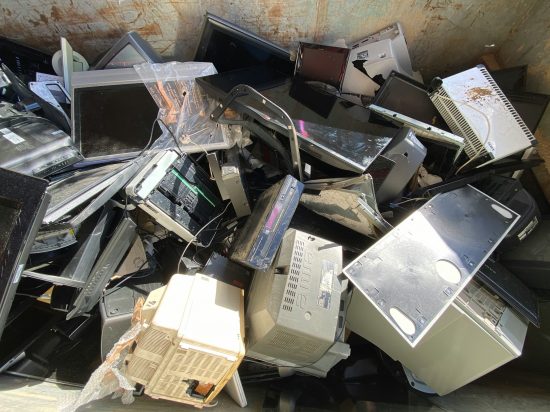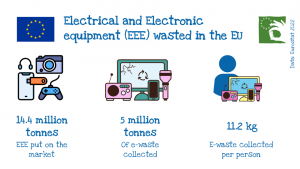Have you already registered your action for the EWWR 2025? To encourage your participation in this year’s edition, we are launching a new factsheet in collaboration with Zero Waste Europe: “An Overview of WEEE within the EU Framework”.
Waste from Electrical and Electronic equipment (WEEE) is one of the fastest growing and most problematic waste streams within the EU today – currently it is increasing by around 20% each year. The category of WEEE is also one of the broadest in terms of the items it covers – from mobile phones to fridges, solar panels to toothbrushes.
The collection, recycling and reuse of electrical items and equipment is gaining increasing importance as many of these products contain highly valuable critical raw materials and other metals that will be sought after to fuel the transition towards renewable energy. Many items within the WEEE category also pose a great risk if not treated properly, given the toxic and dangerous nature of electronic components and their batteries.
Key facts on waste generation & collection
According to the latest Eurostat data from 2022:
➔ 14.4 million tonnes of electrical & electronic equipment was put on the market
➔ 5 million tonnes of e-waste was collected
➔ Therefore, roughly 11.2 kg of e-waste collected per person
➔ The EU collection rate for WEEE in 2022 was around 40‑41%
EU framework
The WEEE Directive (2012/19/EU) sets targets for the separate collection, recycling, and recovery of WEEE and establishes Extended Producer Responsibility (EPR) for producers.
The RoHS Directive complements it by restricting the use of ten hazardous substances such as lead, mercury, and cadmium in electronic equipment.
2025 review highlights
The European Commission’s 2025 evaluation identified key issues:
-
Insufficient scope for new CRM-rich waste streams (e.g., renewable energy tech).
-
Only a few Member States meet the 65% collection target.
-
Low recovery of critical materials.
-
Fragmented EPR systems across the EU.
-
Inconsistent recycling standards.
Ongoing challenges
Collection rates are falling due to increased device sales, illegal exports, and hoarding of unused electronics at home. Greater harmonisation, stronger enforcement, and public awareness are needed to meet EU circular economy goals.
 EN (full site)
EN (full site) ITA
ITA FRA
FRA POR
POR ESP
ESP CAT
CAT DEU
DEU NED
NED HUN
HUN
